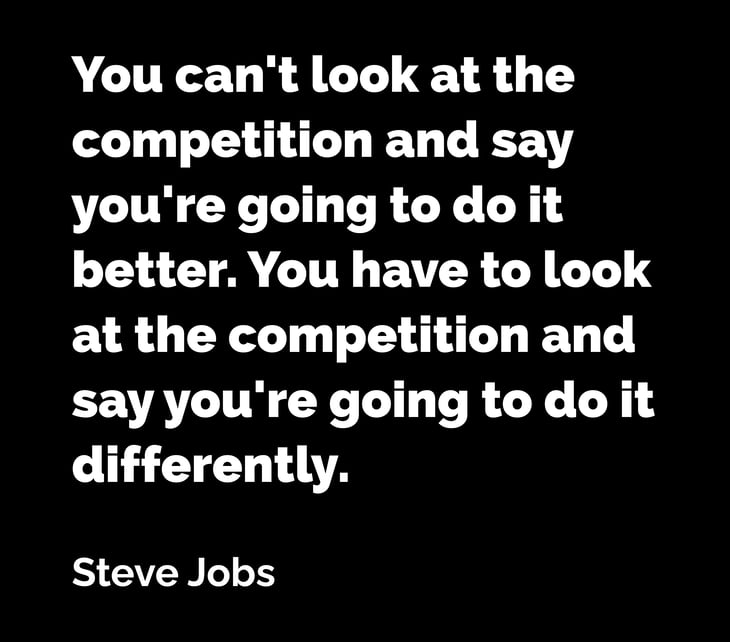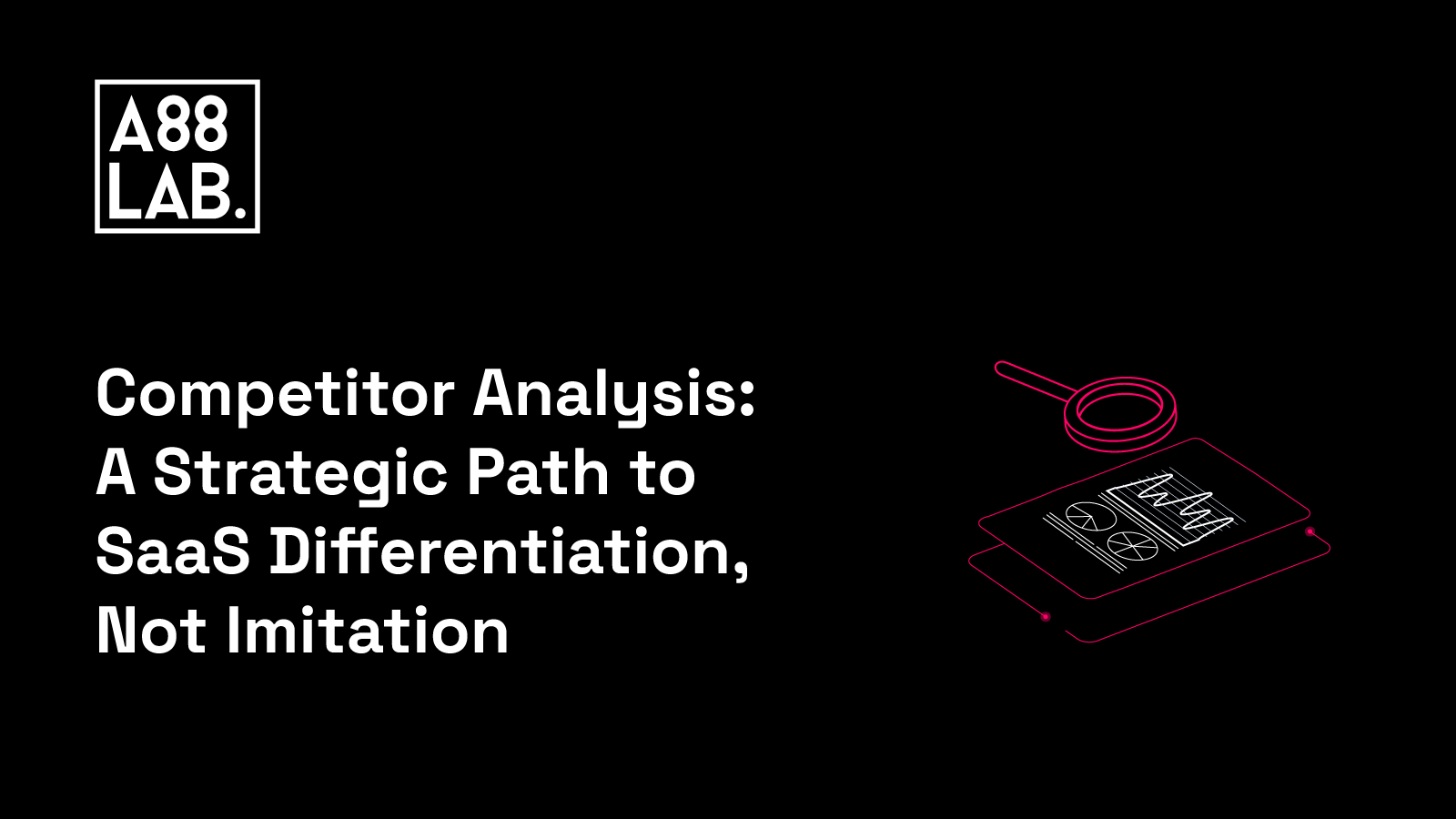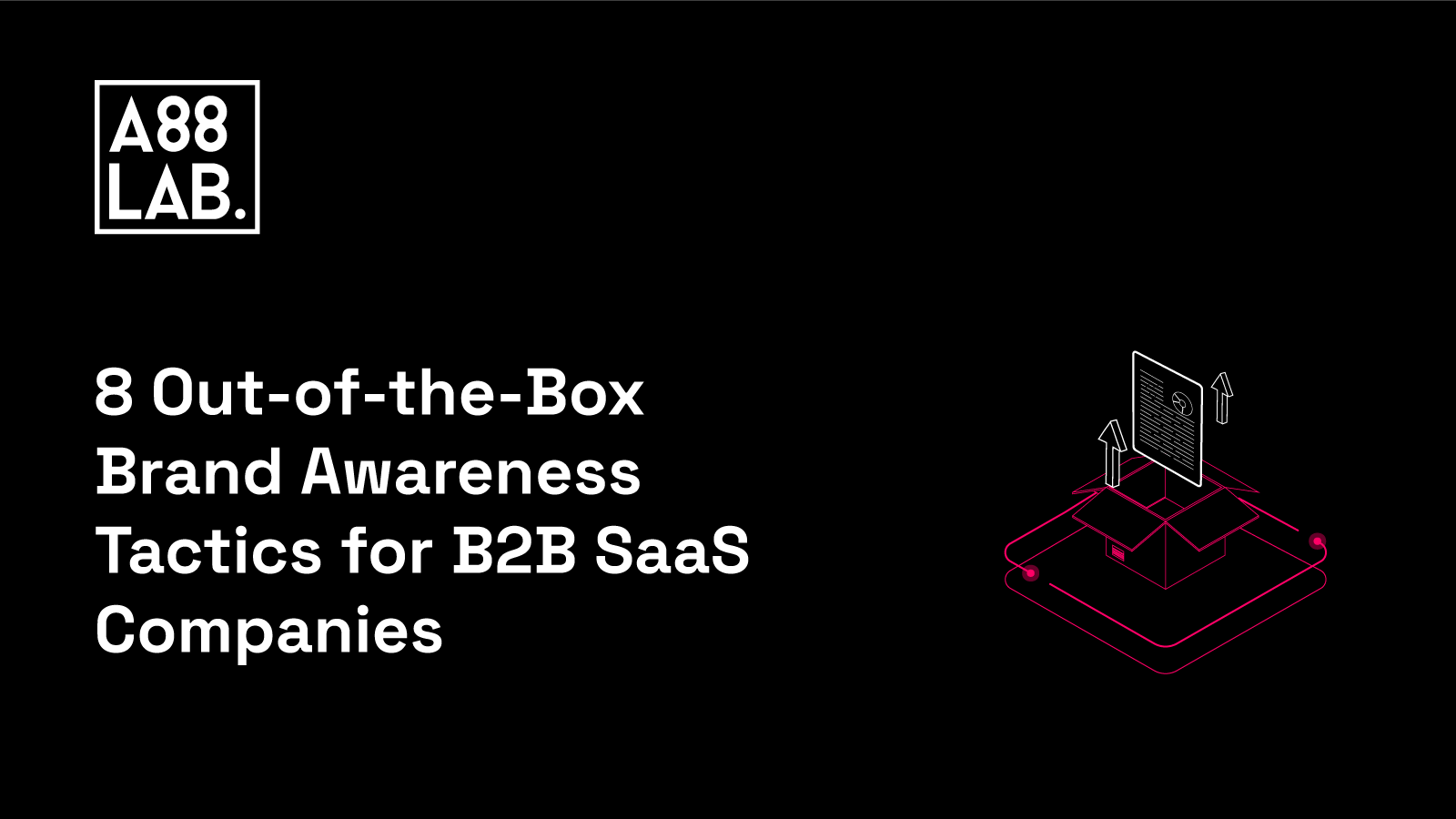Much like a morning cup of coffee, for many marketers, competitor analysis is often an essential part of their daily routine. They can't resist checking out their rivals' newsletters, keeping an eye on their LinkedIn posts, noting their latest feature updates, or checking their websites for new content or pricing.
And why shouldn't they? After all, knowledge is power—especially when it comes to staying ahead of competitors in a saturated market. Staying informed about their strategies helps you shape your own counter-strategy and ensures that your voice is not lost in the noise of the industry.
However, there is a pitfall to competitor analysis that many marketers fall into—over-analyzing the competition. It's easy to forget that your competitors are not your primary focus and instead get wrapped up in the details of what they're doing, how they're doing it, and why it might work or fail. Eventually, you become so captivated with competitor analysis that you treat it as your marketing bible.
Next thing you know, you start imitating them instead of differentiating yourself in the marketplace. This misstep is not just an identity crisis; it also drains your resources, consuming your team's time, effort, and creativity and directing them toward the wrong goals. Instead of focusing on their customers' needs and desires, your team finds themselves dancing to your competitors' tune.
So, instead of following this (wrong) path, use competitor analysis to create a unique strategy for your company. This article will explain how to differentiate your SaaS product from competitors by taking a customer-centric approach and provide some key takeaways to help you stay focused on your own goals and objectives. After all, customers want to see distinctive brand voice and solutions, not an echo of their competitors.
The Significance of Competitor Analysis in SaaS
Let's start with the essentials: what is competitor analysis, and why does it matter?
Competitor analysis is the process of understanding what your competitors are doing, how successful (or not) they're doing it, and why. Or according to HubSpot, "A competitive analysis is a strategy that involves researching major competitors to gain insight into their products, sales, and marketing tactics."
Simply put, understanding your competitors' strengths and weaknesses can help you make better decisions about how to differentiate your SaaS product in the market. When done right, competitor analysis provides invaluable insights that allow you to create an effective customer-centric strategy.
It can also open up plenty of new opportunities. By dissecting your competition, you can identify potential areas of improvement that allow you to:
Win Over a Bigger Market Share
By understanding where your competitors are doing well (or not so well), you can figure out how to target those areas and gain a bigger slice of the market share. For instance, if you see that your competitors are focusing more on enterprise customers while neglecting the needs of small businesses, take advantage of this opportunity to offer a product that caters to these underserved customers.
Your goal should be to focus on the weaker parts of their strategy, capitalize on them, and fill in the gaps they have left open.
Improve Marketing Strategies
Taking the time to analyze your competition can also help you improve your marketing efforts. Gaining insights into the strategies, tactics, and channels they're using will help you better understand what works and what doesn't in terms of customer engagement.
Are they using email campaigns? Are their social media posts engaging? What keywords are they targeting? These are all questions that competitor analysis will answer for you.
Increase Your Value Proposition
Conducting a detailed analysis of your competitors can also strengthen your value proposition and make it stand out on the market. By understanding the benefits and features your competitors are offering, you can identify new ways to differentiate your product and lead the market with innovative solutions.
For example, if your competitor is providing a basic service for free while you're charging a premium, think of ways to add more value to your product and convince customers that it's worth the investment. Add features your competitors don't offer, provide higher-quality customer support, or simply focus on creating a unique user experience that will keep your customers loyal to your brand.
Identify Market Gaps
Take a look at your analysis and ask yourself if there are any gaps in the market that you can fill. By looking at what your competitors are doing, you can identify areas where there's an opportunity for you to jump in and make a difference.
For instance, if your competitors are only focusing on a specific customer demographic, you can use the data to find out if there's an underserved market that you could target. Pay attention to the reviews and comments customers leave about your competitors and take note of any complaints that may give you an idea of what new features need to be added or changed to make the customer journey smoother.
Keep Your Finger on the Pulse of the Market
Detailed market research and competitor analysis lay the groundwork for an effective sales and marketing strategy that distinguishes your company from the rest. But it's not enough to just do the research once and expect your SaaS to stay ahead.
It's important to keep track of not only what your competitors are doing but also of any new trends in the market. Regularly check for new updates from all relevant players, follow industry blogs, keep an eye on social media conversations and customer feedback, and attend events related to your industry – it all helps you understand how customers perceive different products and services in your niche.
Mistakes to Steer Clear of in Competitor Analysis
Before diving into this section, let's take a moment to acknowledge something - the instinct to mirror your competitor's strategy is normal.
Imagine you're scrolling through social media or reading the competitor's newsletter and see they've created a new campaign or offered some fresh resources to their customers. You find yourself thinking, "Why didn't we think of that?" and you quickly jump on the bandwagon and do something similar.
The next thing you know, you've drained countless hours, exhausted your team's resources, and possibly even redirected your budget to mimic the competitor's offering.
In most cases, the result is not as impressive as you'd hoped and often not worth the effort you put in. Impulsively following what others do without keeping your unique brand persona in mind won't help you differentiate from the competition.
As discussed earlier, well-conducted competitor analysis should aim to achieve different things - identify trends, understand the competitive landscape, recognize opportunities, identify potential threats, and help you define your unique value proposition. If it isn't fulfilling these objectives, you might need to rethink your approach.
Let's take a look at additional mistakes to avoid in conducting a successful competitor analysis.
Setting Unattainable Benchmarks
When you spend time researching the competition, it's easy to get carried away and set overly ambitious - and sometimes unattainable - goals for your organization.
Especially if you’re an early-stage SaaS, comparing yourself to a company that's been around for longer, is larger in size, or has a higher budget won't help you take realistic action. Not to mention, measuring yourself against a more established competitor isn't effective in the long run.
Rather than setting an idealized benchmark, focus on understanding where your competitors excel and how your company can fit into the larger picture. This way, you can realistically measure their success and identify areas for improvement - without comparing your performance to someone who's miles ahead.
Impulsively React to Competitors
If your competitor takes a certain direction, it's easy to feel pressured to follow suit. However, going down this path without any strategic analysis or research is not the best idea.
For example, if your competitor decides to market its product to a different industry or host a webinar on a specific topic, don't just impulsively call your team and demand they do similar things.
Instead, take a moment to evaluate their actions. Perhaps they're struggling with revenue, and it's their attempt to get a boost. Or, maybe they're targeting an industry with higher margins that can support their business model.
In other words, take a step back and ask yourself if these decisions make sense for your organization instead of impulsively following their lead. Only like that can you ensure your initiatives are actually helping your organization move in the right direction - rather than spiraling off course with no clear destination in mind.
Neglecting the Importance of Customer Feedback
One common mistake SaaS companies make is neglecting the importance of customer feedback in their competitor analysis. It's easy to get caught up in the competitor's product features, price points, and marketing strategies without considering the actual user experience.
Not spending enough time understanding what the market thinks, feels, and says about your competitors can lead to misguided strategies. So, make it a point to include customer reviews, ratings, and testimonials when performing an analysis. Remember, it's the customers who use the products, and their perspective matters the most.
Echo Competitor Opinions Too Loudly
Don't let your competitors' opinions become your guiding principles. While it's easy to fall into the trap of echoing competitor opinions without questioning their validity, let's not forget competitor analysis is meant to provide you with insights and ideas, not absolute instructions.
Too often, we see companies adopt a competitor's vision without considering how it fits into their own mission or roadmap. Make sure you have a process in place to validate competitor claims with your own user feedback. Otherwise, you could waste time on initiatives that don't add value to your customers and business.
Underestimating the Power of Differentiation
When looking at your competitor analysis, ask yourself the following question: "How can we differentiate ourselves?"
Think of what made you get started in the first place. What gap in the market did you see that made you think there was an opportunity to create something different or better?
Don't forget about it. That's what will set you apart from your competitors. You don't have to create a new category or revolutionize an industry, but you do have to ensure your product is unique and provides value in the market.
Finally, don't be afraid to take risks. This can mean getting creative with pricing models, packaging options, feature sets, customer service tactics, or anything else that can help you stand out. Many SaaS companies fall into the trap of comparing feature-for-feature with their competitors, losing sight of their unique value proposition.
Your aim shouldn't be to create a replica of your competitor's product but to offer something they can't. By making your offering truly unique, you'll be more likely to draw in high-quality customers and build loyalty with those who are already using your product.

Ignoring the Bigger Picture - Market Conditions
Lastly, many SaaS companies tend to miss out on analyzing the broader market conditions while focusing too much on their immediate competitors. You have to keep an eye on the overall trends in the SaaS space, technological advancements, economic conditions, shifting customer expectations, and other external factors.
Ignoring them can lead to a narrow understanding of the competitive landscape and possibly missed opportunities for scaling and innovation. Being aware of the broader market conditions will help you stay ahead of your competitors and position your product for success in the long run.
Take a holistic approach to competitive analysis and look at the market from multiple angles. That way, you will gain a 360-degree view of the competitive landscape, and staring over the fence to see what your neighbors are up to won't be the only thing informing your strategy.
Wrapping Up
Competitive analysis is a valuable tool and a prerequisite for successful product differentiation. However, it should be approached strategically, not as an excuse to imitate your competitors.
Take a realistic yet creative approach to understanding what your competitors are up to and how you can stand out. Analyze their USPs, pricing strategies, market positions, customer feedback, and overall performance. Then, take a step back and look at your own marketing strategy. If everything you do can be equally applied to one of your competitors, chances are you're not properly differentiating yourself.
Maybe you're moving in the same direction as them, or you're accidentally copying their style, but either way, consider revisiting your strategy and think hard about what you can do to stand out. After all, that's the true goal of any competitor analysis.
.png)


